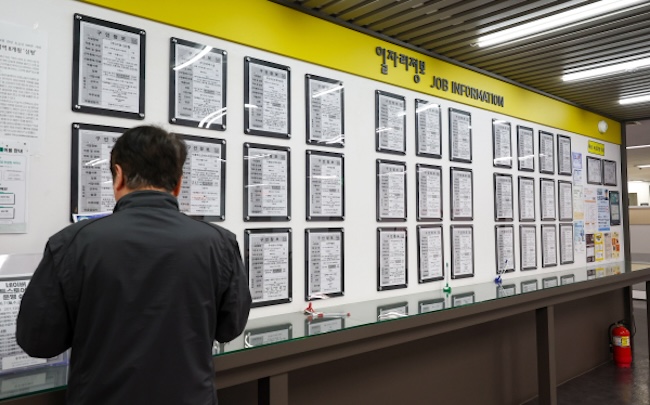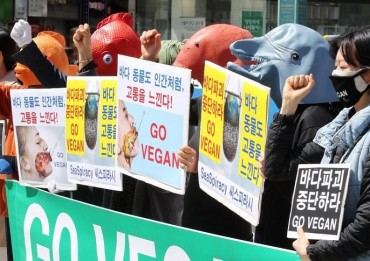
This May 17, 2024, file photo shows a man checking job posts at an employment center in Seoul. (Image courtesy of Yonhap)
SEOUL, Nov. 13 (Korea Bizwire) — South Korea added less than 100,000 jobs in October for the first time in four months primarily due to a slowdown in the wholesale, retail and construction sectors, data showed Wednesday.
The number of employed people aged 15 years and older came to 28.85 million as of end-October, up 83,000 from a year earlier, according to the data compiled by Statistics Korea.
In July, monthly job additions exceeded 100,000 for the first time in three months, reaching 172,000. This was followed by increases of 123,000 new jobs in August and 144,000 in September.
October’s on-year increase marks the smallest monthly gain since May, when the country reported an 80,000-job increase.
The slower job growth in October was mainly due to job losses in sectors like wholesale and retail, as well as construction, despite gains in health care, education, and science and technology.
Employment in the wholesale and retail sectors dropped by 148,000 compared with the same month last year, continuing a downward trend for the eighth consecutive month.
The monthly decline is also the largest since July 2021, when 186,000 wholesale and retail jobs were lost.
The number of people employed in the construction sector fell by 93,000 in October, marking six straight months of decline, according to Statistics Korea.
“The decrease in retail jobs appears to have extended to wholesale sectors as well,” Suh Woon-ju, a Statistics Korea official, said in a press briefing.
A finance ministry official, speaking on condition of anonymity, said half of the jobs in the wholesale and retail sectors are held by self-employed individuals.
“Structural factors, such as excessive competition, the trend toward online and automated services, and the increase in large-scale stores, are also contributing,” the official added.
In contrast, new hiring in the public health and social welfare field gained 97,000 on-year last month, and jobs in the science and technology service sector went up by 77,000.
October’s job growth was also led by more positions for older adults.
Jobs for those aged 60 and older rose by 257,000 on-year, and those for people in their 30s and 50s climbed 67,000 and 12,000, respectively.
But those in their 20s had 175,000 fewer jobs last month, and people in their 40s also saw jobs decline by 72,000 on-year, the agency said, adding the overall number of people in the two age groups has also fallen.
The employment rate among people aged 15 years and older remained unchanged at 63.3 percent, the highest level for any October since the agency began compiling such data in 1982.
The OECD-method hiring rate of people aged 15-64 years grew 0.1 percentage point to 69.8 percent last month, which also marked the highest level for any October since 1989.
The total number of unemployed people came to 678,000 in October, up 51,000 from a year earlier, the data showed.
The jobless rate went up 0.2 percentage point to 2.3 percent last month, according to the data.
The official unemployment rate gauges those who are immediately available for work but failed to get a job for the past four weeks despite active efforts to find a job.
The economically inactive population, who had no willingness to seek a job and remained unemployed, grew by 21,000 from a year earlier to 16.08 million in October.
The number of the so-called “take-a-rest” group, who replied that they took a rest during a job survey period, came to 2.45 million last month, which also marked the highest level for any October
“Temporary factors, such as the base effect from last year’s employment growth and an increase in rainy days during the survey week, contributed to a slowdown in job growth,” First Vice Finance Minister Kim Beom-seok said during a meeting with government officials.
Kim also expected growth to expand in November and December, given improved conditions for private consumption and the base effect.
(Yonhap)






